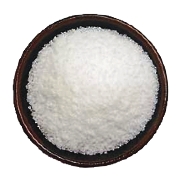Q: Dear Chef Boy Ari,What’s the big deal with sea salt? It’s way more expensive than regular salt, and until I can be enlightened as to its advantages, I see no reason to buy it.—Lick of Sense A: Dear Lick,According to Healing With Whole Foods , by Paul Pitchford, your table variety iodized salt “… is not the whole salt used for millennia by traditional people around the world, but the highly refined chemical variety that is 99.5 percent or more sodium chloride, with additions of anti-caking chemicals, potassium iodide and dextrose to stabilize the iodine.” This stuff, he says, not sea salt, is behind many salt-linked ailments, while whole salt, which is usually derived from the sea, contains as many as 60 trace minerals. Pitchford speculates that perhaps people eat too much salt these days in an effort to get minerals that are stripped from processed salt. He also warns against processed sea salt, which may also be lacking in these minerals.Another interesting read on salt is Salt: A World History by Mark Kurlansky. This 449-page treatment of salt will be an eye-opener to anyone who wasn’t already aware of the range of salt types, from the snowflake powdery Okinawan Sea Salt to Pink Himalayan salt to Cyprus Black Lava Flake, from Salish Alderwood Smoked Salt to the classic French Fleur de sel le Guerandais, not to mention more than 10,000 industrial uses for salt.Personally, I’m a fan of the reddish “Real Salt” they sell at some health food stores. It’s mined in Redmond, Utah, about 200 miles south of Salt Lake, and it’s purported to contain 50 trace minerals, including naturally occurring iodine. It looks cool, with visible mineral flecks, and has a much more complex flavor than white-bread table salt.Take-home message: It’s not where it’s from that counts, it’s what’s inside.
Send your food and garden queries to flash@flashinthepan.net.




